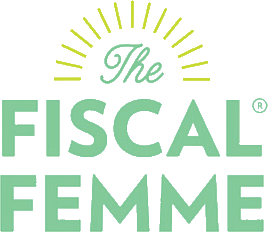What’s a 401(k)? And how does it work?
Everything You Need to Know About Your 401(k).
You may be invested in a 401(k) plan without really knowing what it is or what’s happening with your money. It’s a task many of us avoid because the whole process can be confusing and overwhelming. Even though it’s better to have started than to wait to understand it all, it’s ideal to have a handle on what exactly is happening with your hard-earned cash. Hello, financial adulting! Here’s everything you need to know about your 401(k).
A 401(k) is a company sponsored retirement plan. That means, you can’t open one up on your own. If your company doesn’t offer a 401(k) (or 403(b) if it’s a non-profit), you can open up and invest in an Individual Retirement Account (IRA). Or, if you are an entrepreneur, there are an array of options available to you.
What are the benefits of a 401(k)?
First off, many companies offer some sort of 401(k) matching. This means, when you put money into the account, they contribute free money (well it’s part of your compensation package) up to a certain percentage.
There are also tax advantages. The investments in our 401(k) accounts (and other retirement accounts) grow tax-free. In our typical brokerage accounts we pay capital gains tax on the money we make, which can range from 0-20% depending on your income. You can also defer paying taxes (see more about that in the Roth vs. Traditional section).
If my company doesn’t offer 401(k) matching, is it still worth it?
The earlier we start investing for our retirement, the more time we give compound interest to work it’s magic. What kind of magic?
Here’s a fun one.
Would you rather have a penny that doubles each day for 30 days or $1,000,000?
Answer
With the doubling penny, you’d have $5,368,709 by day 30.
There are also tax benefits associated with putting money in a 401(k). The money grows tax free. Usually we have to pay tax on our investment gains (aka the money we earn from our investments). In a retirement account, we don’t. The money we contribute also can reduce our taxable income, so we pay less in taxes now.
Pretend it’s untouchable.
Money in our 401(k) will be penalized (10%) and taxed (income tax) if we take it out before we reach 59 ½. Plan and try not to touch it!
Roth vs. Traditional.
Many 401(k) programs now offer two account options - Roth and Traditional. Traditional means money goes in pre-tax and when you retire you pay taxes. Roth is the opposite - money goes in after-tax and you don’t pay taxes when you take the money out in retirement. The decision is all about your tax rate.
“Fun” fact:
If your tax rate is the same now as it will be in retirement, there’s no advantage to choosing one type of account over the other.
When we’re earlier on in our career and know our income will be increasing, it’s often recommended to invest in a Roth. A Roth 401(k) or IRA also mitigates tax risk because we don’t know what taxes will be like when we retire.
Choose your investments.
With our 401(k) there are a certain number of fund options to choose from. If you can’t find them when you login, ask your benefits representative to send you the options.
Start by figuring out your ideal asset allocation.
Asset allocation is our mix of stocks, bonds and cash, and deciding on this mix is probably our most important decision as an investor. For retirement, there’s a quick calculation you can use - take 120 minus your age and that’s the percentage of your money that should be in stocks vs. bonds.
For example, if you are 30, 120 - 30 = 90% stocks and 1 - 90% = 10% bonds.
Target date funds (or all-in-one funds) are a great option for our retirement accounts (as long as the fees are low) because it takes the work out of reallocating or rebalancing when our asset allocation gets out of whack. Why will it get out of whack? As the market moves up and down, our percentages will change.
minimize fees.
When choosing which funds to invest in, look for the expense ratio. A 1 or 2% fee might not sound like much, but that comes right from your investment earnings. If you earn 7% on an investment in a year and the expense ratio is 1%, you only get to keep 6% of those earnings. Put another way, take the expense ratio and multiply it by your total assets and that’s the amount in fees you are paying each year.
There may be other fees associated with your 401(k) and it’s important to know about them. Are there annual fees or fees to buy and sell funds?
How much do I need to retire?
Try out a few of these retirement calculators to find out how much you want to have when you retire and what that means you should be putting aside now. Seeing these numbers can be quite a shock but don’t let that discourage you. Playing around with the calculators will show you that given time to grow, our contributions, whatever size they are, can make a big difference over time.
That being said, most of us won’t be contributing as much as we’d like in order to hit our goals. We can slowly increase our contributions over time to get there. Start with as little as a 1% increase every six weeks. Some 401(k) programs offer automatic increases that you can set up.


